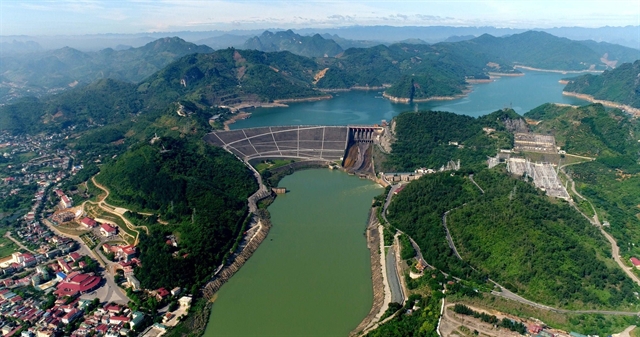Water resources planning for 2021-2030 approved
 |
| The plan aims to ensure national water source security, combating and overcoming harmful consequences caused by water. Photo baotainguyenmoitruong,vn |
HÀ NỌI — The Vietnamese Government has adopted a decision to approve the master plan on water resources for the period 2021-30 in an attempt to address droughts and pollution problems.
The viewpoint is that the master plan on water resources must be strategic, ensuring a long-term vision, overall orientation, regulation and distribution of water resources to meet the objectives of the socio-economic development strategy, and priority should be given to ensuring water supply for daily life, stabilising social security, eradicating hunger and reducing poverty.
Decision No. 1622/QĐ-TTg aims to ensure national water source security; effectively and sustainably managing, protecting and using water resources; combating and overcoming harmful consequences caused by water, ensuring a balance between needs for people’s livelihood, socio-economic development and environmental protection.
It also aims to control the quality and reserve of water sources, improve the water storage capacity in river basins, economic zones and localities basing on climate change adaptation and ensure national defence and security.
It looks towards integrated governance of the water sector on the basis of digital technology; managing and using water resources in a cyclical cycle, ensuring thrift and efficiency, serving multi-purposes, and meeting the requirements of rapid and sustainable national development.
The goal by 2030 is to harmonise and distribute water resources fairly and reasonably among sectors, localities, and water exploiters and users according to the integrated planning of inter-provincial river basins.
By 2025, 100 per cent of large and important river basins will have integrated planning for inter-provincial river basins; the rate of using clean water for daily life among urban population will be raised to to 95 per cent – 100 per cent and 65 per cent among the rural population.
On the other hand, the plans set a target of basically monitoring over 90 per cent of water exploitation and use activities; improving the efficiency and capacity of water exploitation and minimising water loss in the system of irrigation works; reducing the rate of water loss in water supply activities to 10 per cent.
The water management sector will also work to effectively overcome drought and water shortages in the dry season in river basins, areas with difficult access to water sources, especially in the South Central region, Central Highlands, Mekong River Delta, remote areas and regions. remote and islands.
By 2030, wastewater to be collected and treated meeting standards and technical regulations before being discharged into the environment is set to account for 30 per cent of the total volume in urban areas from Grade II and above.
Other key works are to improve and restore important water sources that have degraded, depleted and polluted; and to complete the establishment and announcement of corridors to protect water sources, ensure flow circulation, prevent and control landslides on riverbanks, and reduce water-induced harmful effects.
By 2050, Việt Nam is expected to raise its national water security index to be among the countries that effectively ensure water security in the world. It will work towards being proactive in water resources in all situations, forecasting and regulating water, preventing floods, droughts, saltwater intrusion, pollution, degradation, and water depletion, and responding to climate change.
To realise the planning, six solutions have been set, including those involving law, policies, finance, technology-science, international cooperation, communications, and training.
Regarding legal solutions, the master plan calls for the amendment of policies on water resources management; privatising water industry in building and restoring polluted and degraded rivers on the basis of harmonising state and enterprises benefits. It also points out the need to apply financial duties with those benefiting from these activities and use of economic tools in preventing pollution, water resource exhaustion.
In terms of science and technology solutions, the plan said it is necessary to focus on research and technology co-operation with priorities on weather data; remote sensing data, GIS, satellite image information using smart technology, artificial intelligence for water resource management.
Solutions on training and capacity building are to focus on reviewing, assessing and consolidating human resources in water resource management at central and local levels; formulating and implementing training and retraining plans and programmes that are suitable and meet requirements for water resource management. — VNS
